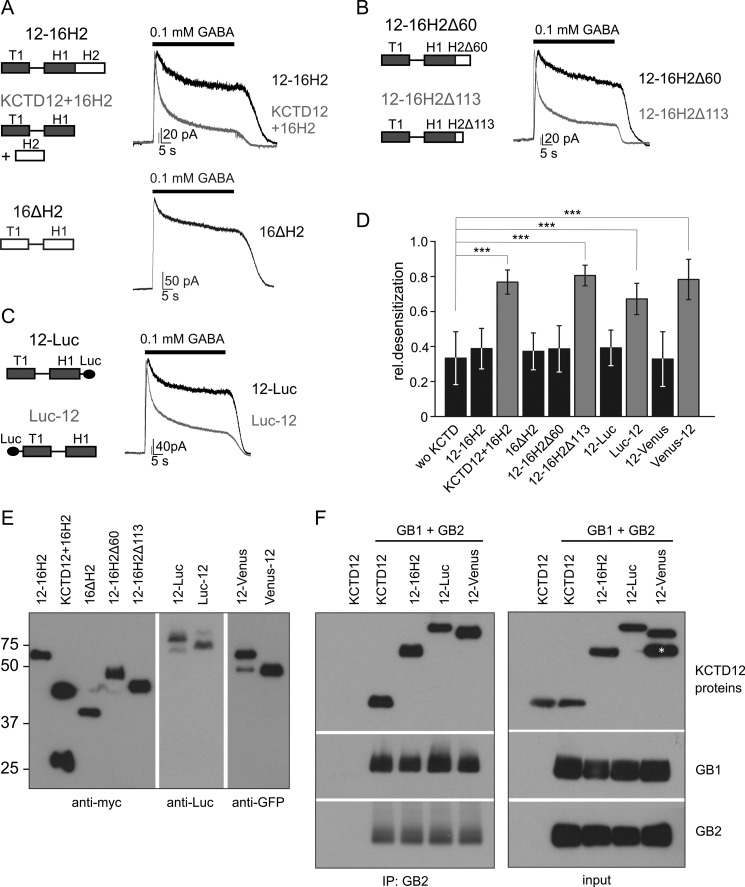FIGURE 2.
The H2 domain inhibits desensitization by the KCTD proteins. A-C, representative traces of GABAB-activated Kir3 currents recorded at −50 mV from CHO cells co-expressing GABAB(1b,2), Kir3 channels, and KCTD proteins. In the presence of 12–16H2, a chimeric protein consisting of KCTD12 and the H2 domain of KCTD16, Kir3 currents exhibit modest desensitization. In contrast, when the H2 domain of KCTD16 was co-transfected with KCTD12 (KCTD12 + 16H2), currents show significantly increased desensitization. This indicates that the H2 domain exerts an inhibitory influence on desensitization in cis but not in trans. However, KCTD16 lacking its H2 domain (16ΔH2) does not induce current desensitization (A). Deletion of 113 amino acids (12–16H2Δ113) but not of 60 amino acids (12–16H2Δ60) from the C terminus of the H2 domain in 12–16H2 restored the ability of the KCTD protein to induce current desensitization (B). Tagging KCTD12 with Luciferase at the C terminus (12-Luc) but not at the N terminus (Luc-12) eliminated its ability to induce desensitization (C). D, bar graph summarizing the desensitization of Kir3 currents in the absence and presence of KCTD proteins; wo KCTD, without KCTD. Data are expressed as mean ± S.D.; ***, p < 0.001 compared with cells without KCTD (Dunnett's multiple comparison test). E, Western blot analysis of chimeric, truncated, or tagged KCTD proteins using anti-myc, anti-Luc or anti-GFP antibodies. The molecular mass is indicated on the left (in kDa). F, co-immunoprecipitation of C-terminally extended KCTD12 proteins with GABAB2. The indicated Myc-tagged KCTD proteins were co-expressed with GABAB1b and GABAB2 (GB1 + GB2). Immunoprecipitation was performed with antibodies against GB2 and immunoprecipitates were analyzed by Western blot with antibodies against GB1, GB2, and the Myc epitope. The asterisk likely indicates a truncated fragment of the 12-Venus protein that is not co-immunoprecipitated with GB2. Luc, Luciferase; Venus, Venus-GFP variant.

